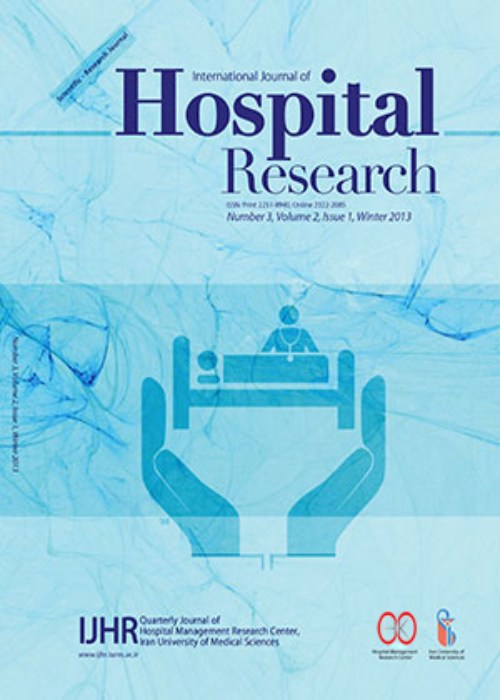Hospital Income Loss due to Incomplete Clinical Documentation: A Survey of Service Items and Potential Causes in the Iranian Teaching Hospitals
Author(s):
Abstract:
Background And Objectives
Many Iranian public hospitals are faced with serious financial challenges such as shortage of income and heavy debts. Nevertheless, many of the healthcare services are often remained unearned for not being included in the clinical records or patient bill, resulting in considerable loss of legitimate hospital income. Given the limited studies in this area in Iran, the present study aimed to survey the undocumented healthcare services which are potentially income-generating, and the factors contributing to the deficient documentation. Methods
A cross-sectional retrospective study was conducted. A sample of 400 clinical records was selected from six hospitals affiliated with Shahid Beheshti University of Medical Sciences in proportion to the number of hospital beds and the rate of discharges. A checklist was developed to record the delivered healthcare services, which were incompletely documented or neglected in the patients’ bills. Using a researcher-made questionnaire, we also asked the opinions of financial managers, the income managers, the chief operators, and other personnel of the discharge unit, with regards to the human resources factors influencing clinical documentation and accounting. The tariffs for the health services were calculated based on the corresponding K value, extracted from the California Book of relative values of diagnostic and therapeutic services. Data were summarized and analyzed using descriptive statistical methods. Findings
NG tube insertion; CVP insertion, lumbar puncture, pleural tap and cut down were the five most frequently neglected medical services in the clinical records. Overall, 998 services for the amount of 75 million Rls were not documented. Only a minority of the personnel of the finance departments had a background of education in accounting. In addition, the majority of financial department personnel had not attended any training course related to the documentation of healthcare services and discharge process. On average, 20 medical records are examined on a daily basis by a single operator in the pre-discharge stage, ranging from 13 to 25 records. In addition, the employees of the discharge units were found to have the dual task of examining clinical records and discharging the patients. Conclusions
Our study identified a number of potentially income-generating healthcare services that are often left unearned in Iranian hospitals. Identification of these services may help prevention of the associated income loss in future. We also identified a number of factors that may contribute to inaccurate documentation of healthcare services. The importance of issue and the possible existence of other factors contributing to incomplete clinical documentation and hospital income loss recommend further large-scale studies.Keywords:
Language:
English
Published:
International Journal of Hospital Research, Volume:4 Issue: 3, Summer 2015
Pages:
137 to 142
magiran.com/p1475818
دانلود و مطالعه متن این مقاله با یکی از روشهای زیر امکان پذیر است:
اشتراک شخصی
با عضویت و پرداخت آنلاین حق اشتراک یکساله به مبلغ 1,390,000ريال میتوانید 70 عنوان مطلب دانلود کنید!
اشتراک سازمانی
به کتابخانه دانشگاه یا محل کار خود پیشنهاد کنید تا اشتراک سازمانی این پایگاه را برای دسترسی نامحدود همه کاربران به متن مطالب تهیه نمایند!
توجه!
- حق عضویت دریافتی صرف حمایت از نشریات عضو و نگهداری، تکمیل و توسعه مگیران میشود.
- پرداخت حق اشتراک و دانلود مقالات اجازه بازنشر آن در سایر رسانههای چاپی و دیجیتال را به کاربر نمیدهد.
In order to view content subscription is required
Personal subscription
Subscribe magiran.com for 70 € euros via PayPal and download 70 articles during a year.
Organization subscription
Please contact us to subscribe your university or library for unlimited access!


